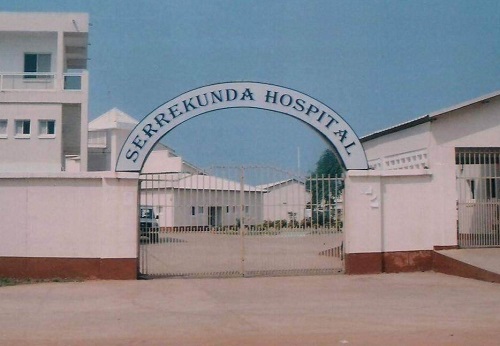
Dec 10, 2021 12:05 PM | Article By: Sanna Jallow

Picture showing the front view of Serekunda Hospital, something the people of LRR would want to have
In the Lower River Region of The Gambia, access to healthcare remains a nightmare for an area who's population is more than 82, 361 representing a population density of 0.51.
It is the only region without a hospital as Basse’s health centre has now been upgraded to a district hospital. The private clinics remain out of reach as the majority of the dwellers are poor while the minor health centres across the region have no drugs most times of the year.
“We are really worried about the situation in our communities. Even if we get to the health centre there is no qualified health professional to attend to us as patients, which makes life very difficult for us," said Mamadou Dem, who hailed from Dongoroba in Jarra East.
Apart from the lack of professionally trained health personnel, they are also often plagued with lack of drugs to treat people, while communities would trek kilometres before they can get the facilities, according to him.
Dem recalled moments when there would be emergencies that needed urgent medical attention, and they could do nothing about it because health facilities are too far to reach within a short time.
According to him, people in the region have been experiencing a nightmare as there are not enough health facilities in the region, with absolutely zero hospitals to take care of major health emergencies.
“We have to walk for kilometres to access the ones in the region. Before you can see a health personnel, the person will have to wait for hours especially when it comes to getting access to drugs. That is because there are not enough drugs in these available facilities. The only thing we can get is to get a prescription and then go to private pharmacies to buy, which is usually very costly considering the poverty around here," he continued.
The Gambia Bureau of Statistics’ (GBoS) Population and Demography report published in 2017 has described poverty as more of a rural phenomenon as the rural poverty rate has increased from 64.2 percent in 2010 to 69.5 percent in 2015/16. The poor in rural areas account for about 64 percent of the total poor in the country.
Dem has reached these statistics stating that most dwellers do not have income to continue buying drugs from the private pharmacies.
“It is very painful to travel long distances to seek for healthcare only to find that there is no person available to attend to you or there is no drug available. You have to go empty handed," Dem lamented.
He urged the government to come to resolve their request that has been pending for decades, while people continue to die of avoidable illnesses.
Now that Barrow has been re-elected as president for the next five years, Dem firmly appealed for consideration of their plights.Surang Jallow, a native of Seno in Jarra West had nearly lost his sister-in-law at labour due to lack of blood at the facility. “I went in search of blood from my village up to Farafenni, where I was lucky to get blood to save her life.”
The poor condition of the health centres is abysmal in rendering health services. Jallow explained that the cost they charge on patients for medical tests at the labs is D50 per test, stating that is expensive.
“We are really tired of going to private pharmacies to buy drugs because it is expensive for us to afford, and there are no drugs in the health centres. I am urging the government to wipe our tears,” he decried.
Jallow believes that the candidate he had voted for in the just concluded presidential election would address their nightmare. He remains hopeful that the new leadership will construct a major hospital in the region as well as improve the services of the existing facilities, including making drugs available. This will avoid many health-related casualties, including maternal mortality.
The infant mortality rate was 96 for every thousand births and the under-five mortality was 137 per every thousand births, as per the 2013 Census.
In Fololo too, Jarra Central the conditions remain the same in terms of poor service delivery, including drug shortage, lack of qualified medical practitioners and accessibility.
Aminata Dem is a native of the community. “We walk from community to community before we get to a health centre and mostly, we stay all day without getting a single drug from the health centre. We have no other option but to go and buy the drugs from the private pharmacy.”
She expects the newly elected government to ensure drugs are available in the health centres and also with necessary equipment for health personnel to be able to perform their duties as required.
The former Health Minister Omar Sey, has blamed the poor health conditions on the lack of implementation of the primary health care strategy plan.
“We have lost a lot of resources over the past 2 to 3 years that could be used to improve our primary health issues in the Gambia because in 2017, there was money that can address all the primary health problems in the country,” he said.
He recommends the updating of the health policy and decentralising its implementation, arguing that such can make a difference for the rural health issues.
The Gambia National Health Policy has expired since last year – 2012 – 2020 – and there is so far, no new policy available to set out the mechanism of improving the country’s healthcare.
Comments (0)
1 Likes
Leave your thought here
Your email address will not be published. Required fields are marked *